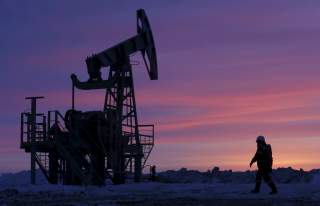North Korea's Secret Fortune: $10 Trillion in Minerals?
Kim might be sitting on a vast reserve of natural resources--if he can ever get it out of the ground.
Who needs rockets when you have $10 trillion in resource riches? That is one estimate of the value of North Korea’s mineral wealth, enough to make any miner drool.
While international sanctions and its own lack of resources have hindered the development of the hermit kingdom’s energy and resource sector, it can expect plenty of help from its friends should the barriers to extraction be removed.
The estimated mineral wealth is from a South Korean research institute, which in 2010 valued the North’s resources at $10 trillion, some twenty times larger than the South’s. Another estimate from a South Korean mining company puts the figure at closer to $6 trillion.
Such figures should be taken with a large grain of salt, since there is a world of difference between estimated resources and the amount that is economically mineable. For example, researchers see plenty of potential for extracting resources from the moon, but the cost would likely prove prohibitive under current conditions.
Recommended: 8 Million People Could Die in a War with North Korea
Recommended: Why North Korea Is Destined to Test More ICBMs and Nuclear Weapons
Recommended: 5 Most Powerful Aircraft Carriers, Subs, Bombers and Fighter Aircraft Ever
Nevertheless, North Korea’s estimated mineral resources of copper, gold, iron ore and zinc, along with its rare-earth minerals and potential oil and gas resources, could prove a valuable asset for the impoverished Communist-ruled nation.
Among its more than two hundred different minerals are the world’s second-largest magnetite reserves and the sixth-largest tungsten deposits, according to the United States Geological Survey.
With an estimated gross domestic product per capita of just $1,700 (purchasing power parity), North Korea ranks as one of the world’s poorest countries, placing 215th globally, above such nations as Somalia. In comparison, resource-rich Mongolia, which has a population one-eighth the size, has estimated GDP per capita of $12,300.
Yet despite reportedly putting priority on the mining sector since the 1970s, its ambitions have been constrained by a lack of equipment, expertise and infrastructure.
The Center for Strategic and International Studies’ Lloyd Vasey suggests that North Korean mining production has “decreased significantly” since the 1990s, with the average operational rate of existing mines below 30 percent of their potential.
“There is a shortage of mining equipment and North Korea is unable to purchase new equipment due to its dire economic situation, the energy shortage and the age and generally poor condition of the power grid,” he writes.
Even despite these barriers, including prohibitions against private mining, the sector still comprises an estimated 14 percent of the North’s economy.
China has been the North’s biggest customer, with mineral exports to its neighbor accounting for more than half of the North’s total trade volume to China in the first half of 2016, particularly coal.
Chinese companies have reportedly invested in a number of North Korean mines, including a $500 million investment at a mining complex at Musan. Other international companies, including from Australia, Britain, Malaysia and Singapore, have reportedly previously explored the North’s energy and resources potential.
Yet the decline in commodity prices following a China-driven boom, coupled with the tightening of international sanctions over the North’s nuclear program, have hit its resource ambitions.
In August, China announced it would cease imports of coal, iron ore and seafood from North Korea, following a continuation of missile tests by Pyongyang. This followed its earlier announcement in February that it would suspend all coal imports from February through year’s end, in accordance with a United Nations Security Council resolution.
With China accounting for an estimated 90 percent of North Korea’s international trade, the sanctions are set to bite on one of the regime’s last major remaining sources of cash.
“There are very limited ways for North Korea to make money: selling weapons, smuggling and mining,” according to Choi Kyung-soo, president of the North Korea Resources Institute in Seoul.
“Because of sanctions, it’s very hard for them to make weapons or to sell [narcotic] drugs, so the only legitimate way for North Korea to make money these days is from selling minerals.”
Yet should the situation change, Russia and even South Korea are reportedly eyeing plans to tap the North’s mineral wealth.
In May, South Korea’s infrastructure ministry invited bids for possible infrastructure projects in the North, including those concerning the resource sector. It reportedly sees such resources as potentially covering the cost of repairing the North’s infrastructure, should reunification occur.
Another strategic gamble for Kim Jong-un could be abandoning plans to become a nuclear power in favor of international support to develop the nation’s mining and energy sector.
Previously, the regime has traded off its nuclear ambitions in return for international economic aid. The estimated $10 trillion in resource wealth could fund “several more generations of leaders called Kim,” as the Guardian puts it.
In the meantime though, the North’s mineral and energy resources likely will remain untapped for the foreseeable future, barring an abrupt shift in policy by Pyongyang.
Anthony Fensom, a Brisbane, Australia-based freelance writer and consultant with more than a decade of experience in Asia-Pacific financial/media industries. You can find him on Twitter: @a_d_fensom.
Image: Reuters.

